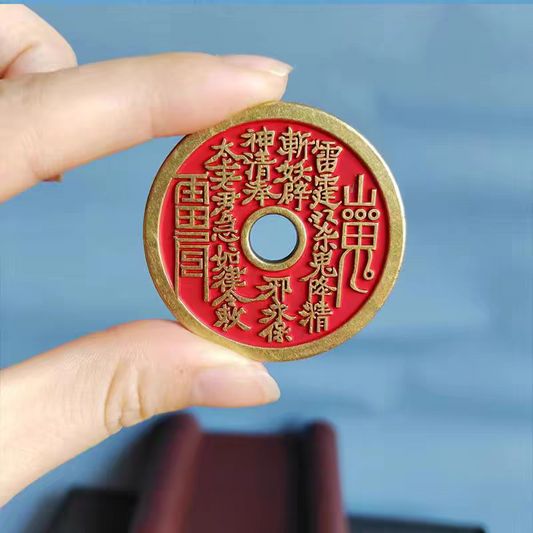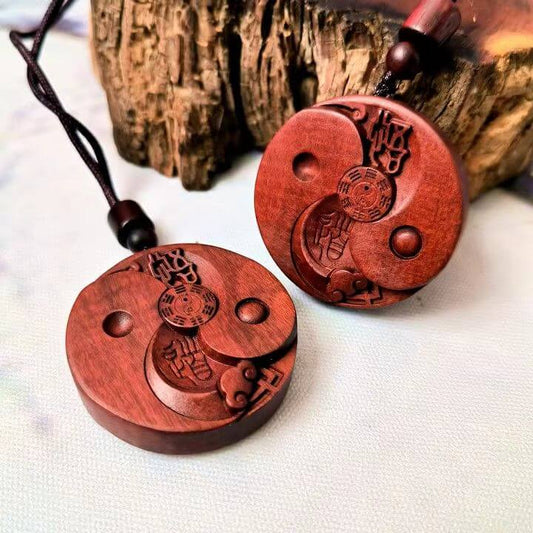
Entering Chinese Mythology: Getting to Know the Legendary Hero Nezha
paulpengShare
Hey, friends! Today, I'm going to take you into the fascinating world of Chinese mythology and introduce you to an incredibly amazing character - Nezha. He's a household name in China, just like those classic superheroes in your countries, and is deeply loved by everyone!
Nezha's origin is really interesting! He originally came from the myths of ancient Persia and Hinduism and later entered China with the spread of Buddhism. In Indian Buddhism, he was called "Nalakūvara," a transliteration from Sanskrit, meaning "the son of Kubera." He was the crown prince of Vaiśravaṇa, the northern Heavenly King, and belonged to the Yaksha god system, serving as a Dharma protector of Buddhism. Even back then, he was already very imposing, holding a divine halberd and guarding the king, officials, and believers.
However, after arriving in China, Nezha underwent many changes. During the Tang Dynasty, he was still a young protector of Buddhism. He once helped the eminent monk Daoxuan and even gave him the Buddha's tooth he had enshrined. In the Song Dynasty, his stories became even more abundant. The plot of "returning his flesh to his mother and his bones to his father" emerged, and this rebellious and brave story made people like him even more. During the Southern Song Dynasty, as Li Jing evolved into Vaiśravaṇa in Buddhism, Nezha, as the crown prince of Vaiśravaṇa, naturally became Chinese. At the end of the Song Dynasty and the beginning of the Yuan Dynasty, his image was brought to the Zaju stage, and he had the cool appearance of three heads and six arms, which was very similar to the Nezha we know today. In the Ming Dynasty, a crucial transformation occurred. In the *Compendium of Deities of the Three Religions*, his identity was changed to "a great immortal under the Jade Emperor's command." He completed the process of becoming thoroughly Sinicized, evolving from an Indian figure to a Chinese one and then converting from a Buddhist deity to a Taoist one. The novels *Journey to the West* and *The Investiture of the Gods* in the Ming Dynasty further solidified his image as the child god we're familiar with today.
In Taoism, Nezha holds a very high status! He has many impressive titles, such as the Marshal of the Central Altar, the Grand Master of the Celestial Passage, the Great General of Awesome Spirit and Prominent Fame, and the Great God of the Three Altars and the Sea Assembly. People affectionately call him Prince Ye or the Third Prince. Taoism highly reveres the lotus, and since Nezha was reborn from a lotus, he has become an important Dharma protector. Especially in northern Taoism, he is regarded as the most important protective god!
Among the common people, Nezha is a heroic deity in their hearts, the god who calms the sea and protects the people living by the sea. In Taiwan, many villages enshrine him. Every year on the ninth day of the ninth lunar month, which is his birthday, Xinying Taizigong, the founding temple of all Nezha temples in Taiwan, is filled with a large number of pilgrims. It's extremely lively! In Zhangzhou, Fujian, on this day, people set off firecrackers, beat drums, and play the Nezha drum music to celebrate his birthday. In Jiangyou, Sichuan, which is the location of Nezha's ancestral temple, every year on the thirteenth day of the third lunar month, the common people believe that he will show his divine power. In the past, people even went to seek his help for difficult illnesses. Now, it has developed into various folk festivals and religious ceremonies.
Speaking of Nezha's stories, the most famous ones are "Nezha Making Havoc in the Sea" and "Nezha's Rebirth with a Lotus Body." "Nezha Making Havoc in the Sea" tells the story of when Nezha was seven years old. He was playing with his magic weapons, the Red Silk of Chaos and the Golden Ring of Creation, in the water and accidentally disrupted the Dragon Palace of the East Sea. The Sea yakshawent to check, and when he saw Nezha, he immediately attacked with an ax. But Nezha wasn't afraid at all. He used the Golden Ring of Creation to defeat the yaksha. This shows how brave he was in the face of evil forces. "Nezha's Rebirth with a Lotus Body" is also very magical. After Li Jing destroyed Nezha's golden body, Nezha went to ask Master Taiyi for help. Master Taiyi used lotus flowers and lotus leaves to create a new body for him, allowing him to come back to life. Isn't it amazing?

Nezha has different images in various literary and artistic works. In *Journey to the West*, he is a child general in the Heavenly Palace. He has a combination of Taoist and Buddhist characteristics. When he fought against the Monkey King, he had six weapons in his hands and could transform in many ways. In *The Investiture of the Gods*, his story is even more detailed. He is the third son of Li Jing, the general guarding Chentangguan, and was reincarnated from the "Spiritual Pearl." His appearance in this novel changes in different stages. When he was born, he was a cute baby. After being reborn with a lotus body, he became very handsome but extremely tall. Later, he acquired the ability to have three heads and eight arms, and his appearance became fierce. He also has eight powerful weapons, making him very powerful in battles.
Besides novels, Nezha appears in many other literary and artistic works. There are Nezha - related images on cultural relics like the stone coffin of "Nezha Fighting against the Dragon King Xiujilong" and Dunhuang murals, and there's also an ivory - painted and gilded Nezha statue from the Qing Dynasty. In the field of picture books, the *Nezha Making Havoc in the Sea* painted by the Chinese painter Zhang Ding is very famous. In the film and television industry, there have been many Nezha - themed works. From the 1979 *Nezha Making Havoc in the Sea* to the 2003 *The Legend of Nezha*, and then to the extremely popular 2019 *Ne Zha: Birth of the Demon Child*, each work interprets his image in a new way. There are also many plays about Nezha, such as the Peking Opera *Nezha Making Havoc in the Sea* and *Nezha*, and the Kunqu Opera *Qianyuan Mountain*.

The reason why Nezha is so popular is not only because of his great supernatural powers and various spells. More importantly, he has many wonderful qualities. He is upright, kind - hearted, brave, and strong. He will stand up when he sees something unfair. Also, he has the lively, clever, and a bit naughty nature of a child, and sometimes he's a bit rebellious, just like the energetic children around us. He represents people's pursuit of freedom and justice, so everyone loves him very much.
This is Nezha, a mythical figure that combines Chinese traditional culture and is full of charm. His stories are still being passed down and retold by generations. I hope you'll also like him and feel the unique charm of Chinese mythology!











